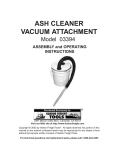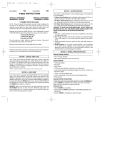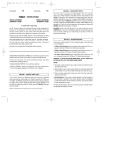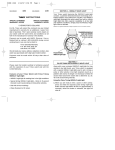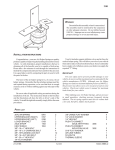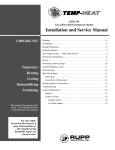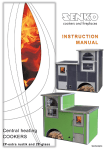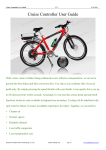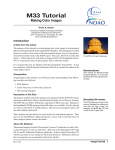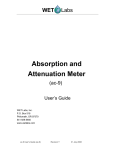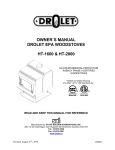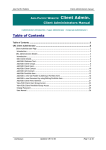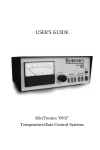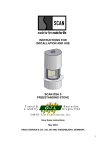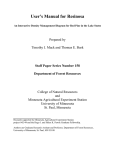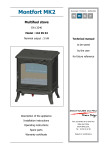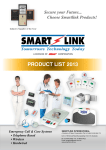Download - Liberator Rocket Heaters
Transcript
OWNERS MANUAL LIBERATOR ROCKET HEATER Model: RMH-1 SAVE THIS MANUAL FOR FUTURE REFERENCE LIBERATOR STOVE, LLC ST. LOUIS, MO. (314)-770-1043 Thank you for your purchase of the Liberator Rocket Heater. This owners manual will assist you in the proper use, maintenance, and safety precautions to undertake in the wood stoves operation and installation. WARNING! READ ALL INSTRUCTIONS CAREFULLY BEFORE USING OR INSTALLING! SAFETY PRECAUTIONS! -Do not touch the appliance while it is hot, in operation or thereafter. Educate all children of the danger of high temperature appliances and maintain supervision of children at all times when children are in the same room as the appliance. -This appliance is only for the burning of natural wood, to include cordwood, twigs and branches only. Never use flammable liquids, artificial logs containing any petroleum derived products of any kind, coal, propane or other gaseous fuels, or any other fuels other than wood at any time under any circumstances. Plastics, foam material, or any other material not mentioned are never to be used in any way as a fuel or for other purposes with this appliance. -Never use gasoline, gasoline-type lantern fuel, kerosene, charcoal lighter fluid or similar liquids to start or 'freshen up' a fire in this heater. Keep all such liquids well away from the heater while it is in use. -The ash cleanout door must never be opened while in operation unless otherwise specified in this instruction manual. -Ashes must be disposed of only when completely cooled with absolutely no embers, cinders, or other signs of combustion in a metal airtight container and the closed container of ashes should be placed on a non combustible floor or on the ground well away from any combustible materials pending final disposal. If the ashes are to be disposed of by burial in soil or otherwise locally dispersed, they should be retained in the closed container until all cinders have thoroughly cooled. -Always review the local, state, and federal laws before installing this appliance. If applicable in your area, contact your local building officials to obtain a permit and information on any installation restrictions and inspection requirements in your area. If you have insurance notify your insurance company and provider. -This appliance must be properly installed to reduce the chance of house fires. The installation instructions must be adhered to. Never use makeshift methods or materials to install this appliance. It is highly recommended that you hire or consult a accredited expert with experience in wood stoves in this appliances installation. -This appliance must be connected to an approved or nationally recognized testing laboratory listed chimney or fluepipe specifically designed for wood burning/heating and high temperatures, with a flue no less than 6" inches in diameter. This heater requires an approved masonry or UL or other NRTL listed residential type and building heating appliance chimney. Use a 6" inch diameter chimney that is high enough to give a good draft. -Creosote – Formation and Need for Removal. When wood burns slowly, it porduces tar and other organic vapors, which combine with expelled moisture to form creosote. The creosote vapors condense in the relatively cool chimney flue of a slow-burning fire. As a result, creosote residue accumulates on the flue lining. When ignited this creosotr makes an extremely hot fire. The chimney connector and chimney should be inspected at least once every two months during the heating season to determine if a creosote buildup has occurred. If creosote has accumulated it should be removed to reduce the risk of a chimney fire. -This product is not listed or approved for use in mobile homes. -Never vent to another room or inside a building. -The special paints used on your heater may give off some smoke and fumes that are not safe to breathe while they are curing during the first few fires. If possible, open windows to vent out the fumes for the first three (3) hours of operation, or until the paint is cured. -Never place clothing or other flammable material on or near this appliance. -This heater must be connected to an appopriate chimney and vented outside. -Never overfire this appliance. If any portion of this appliance or the chimney flue glow, and/or reach the point of incandescence, or exceed 800 degrees Fahrenheit (450 degrees Celsius) this appliance is being overfired and action must be taken to eliminate this effect. Generally, the best action is to reduce the amount of fuel placed in this appliance. -Never use an andiron, grate, or other means to elevate the fire or fuel. This appliance is to be used without a grate, andiron, or the likes in its unmodified form, directly from the factory with an exhaust flue and chimney to be properly and legally installed. -Never connect this unit to a chimney flue serving another appliance. -Save this manual for future reference. -To prevent injury, do not allow anyone to use this heater who is unfamiliar with the correct operation of the heater. -For your safety, we strongly recommend installing smoke and carbon monoxide detectors throughout the house or structure this appliance is installed in. -Do not connect a wood burning heater to a Type B gas vent. Doing so is not safe and is prohibited by the National Fire Protection Association Code. -Liberator Energy, LLC. grants no warranties, implied or stated, for the installation or maintenance of your appliance, and assumes no responsibility of any consequential damage. Safety, damage to property, injury, etcetera, is the sole responsibility of the owner(s) of this appliance. -You are the only one who is responsible for your safety, your property, and your actions- Installation Place the heater on solid masonry or solid concrete. When the heater is used on a combustible floor, use an Underwriters Laboratory Listed or equivalent Type 2 floor protector. The floor protector must comply with NRTL Standards. The floor protector should extend at least 16" inches beyond the front of the cleanout door of the heater, 8" inches beyond each side of the door, and at leat 6" inches past the back of the chimney pipe. In addition the floor protector should extend under and 2" inches beyond each side of the the chimney connector. 1. Install a stovepipe and/or chimney if you do not have one. Only use a cleaned and inspected masonry chimney that is properly lined for wood burning appliances, or a UL Listed chimney designed for wood burning appliances. 2. Place the stove in accordance to the diagrams maximum clearances. Once the stove is connected to the flue pipe and chimney, mechanically lock all joints by using at least three (3) sheet metal screws at each joint. Always install the flue and chimney connectors with the crimped (smaller) end of the joints and elbows pointing down, toward the wood stoves exhaust collar. This to to ensure that, in the event of excessive creosote buildup, that creosote will not run or flow onto the outside of the chimney or flue thus creating an external fire hazard. 3. Check the illustrations below for clearances of the heater to the walls. If you have a solid brick, solid stone, concrete or otherwise non-combustible inert wall, then you may place your heater as you wish regarding those surfaces and walls. However, if the wall in question is only faced with brick, stone, metal, and the like then you must consider them as combustible walls. Chimney Connection Masonry Chimney The masonry chimney must comply with UL or equivalent NRTL and NFPA 211 standards and codes. Before using an existing masonry chimney, clean the chimney and inspect the flue liner to be absolutely sure it is safe to use. Rules For Connecting To A Maasonry Chimney 1. Use a minimum of 3-1/2" inch brick masonry wall framed to a combustible wall. A fireclay liner (ASTM 135 or equivalent) having a 5/8" inch minimu wall thickness must be used and it must be at least 12" inches (1' foot) away from any material that could catch fire. The inside diameter of the fire clay liner shall be sized for the proper snug fit to a 6" inch diameter chimney connector pipe. The fireclay liner shall run to, but not beyond, the inner surface of the chimney flue shall be firmly cemented in place. 2. Use a solid insulated listed factory built chimney length having an inside diameter of 6" inches and having 1" inch or more of solid insulation. There must be at leat a 9" inch air space between the outer wall of the chimney length and any combustible materials. The inner end of the chimney length shall be flush with the inside of the masonry chimney flue which shall be sealed to the flue and to the brick masonry penetration with nonwater-soluble refractory cement. flush Sheet steel supports which are at least 24 gauge (0.024" inches) in thickness shall be securely fastened to wall surfaces on all sides. Fasteners between supports and the chimney length shall not penetrate the chimney liner. 3. Use a 10" inch diameter ventilated thinble made of at least 24 gauge (0.024" inch) steel having two (2) 1" inch air channels. The ventilated thinble must be separated from combustible materials by at least 6" inches of glass fiber insulation. The opening in the combustible wall shall be covered and the thimble supported with sheet steel supports which are atleast 24 gauge (0.024" inch) in thickness. The sheet steel supports shall be securely fastened to wall surfaces on all sides and shall be sized to fit and hold the chimney section. Fasteners used to secure chimney sections shall not penetrate the chimney flue liner. 4. Use an 8" inch diameter solid insulated listed factory-built chimney length which has 1" inch or more solid insulation. The minimum length of the chimney section shall be 12" inches and will serve a pass through for the 6" inch diameter chimney connector. There must be at least a 12" inch air space between the outer wall and the chimney section and any combustible materials. The chimney section shall be concentric with and spaced 1" inch away from the chimney connector by means of sheet steel support plates on both ends of the chimney section. The opening in the combustible wall shall be covered and the chimney section supported on both sides with sheet metal supports which are at least 24 gauge (0.024" inches) in thickness. The sheet steel supports shall be securely fastened to wall surfaces on all sides and shall be sized to fit and hold the shimney section. Features used to secure chimney sections shall not penetrate chimney flue liner. 5. A listed factoyr-built wall pass-through system may be purchased and installed according to the instruction supplied with it to provide a safe method of passing the cimney connector through a combustible wall for connection to a masonry chimney. Please See the Following Pages for Diagrammatic Details and Clearances for Masonry Chimney Installation Flue Connection Through a Non-Combustible Wall UL Listed Chimney Carefully follow the chimney manufacturers instructions. Use only listed type HT per UL 103, 6" inch diameter black or blued chimney connector with a minimum thickness of no less than 24 gauge. If your chimney starts at the ceiling you will need enough 6" inch pipe to reach the ceiling. The top of the chimney must be at least 3' feet above the roof and be at least 2' feet higher than any point of the roof within 10' feet. Rules For Connector Pipe Installation 1. Crimped end of the pipe must always be installed towards the heater. The pipe should slide into the flue collar. The pipe should fit firmly inside and be mechanically attached to the flue collar, locked with at least three (3) screws and sealed with furnace cement 2. If you have a pipe running horizontally, the horizontal length can not exceed 12' feet regardless of the height of the chimney. If the chimney is 24' feet or less in height, the height must be at least twice the length of the horizontal run. 3. You must have at least 18" inches of clearance between any horizontal piping and the ceiling. 4. Secure any connector pipe joint with at least three (3) screws and seal with furnace cement, including the joint(s) at the chimney. 5. It is recommended that not more than four (4) bends of 90 degrees OR any amount of bends regardless of direction exceeding a total of 360 degrees be used in the pipe installation as more than that can cause a decrease in draw and may cause back draft or smoke spillage. 6. The chimney connector shall not pass through an attic, roof space, floor, wall ceiling, or any other similar concealed space. Where passage through a wall or partition of combustible is desired, the installation must conform with NFPA 211. Please Go to the Next Page for Diagrammatic Details and Clearances for UL Listed Class A Chimney Installation Final Draft Inspection (Do NOT do this while the appliance is in operation) To check if your chimney is drafting correctly, open the lighting/cleanout door and put a lit match or cigarette lighter in front of the burn chamber. Then do the same (with the door closed) on top of the fuel feeding area. If the flame is being pulled into the stove it is regarded as safe. If there is no change in the flames direction, the draft is neutral. If the flame is being pushed away, the draft is negative. If the draft is neutral or negative, then you must reinstall the heater with less horizontal run. If you don't have a horizontal run, please call us (the manufacturer) or an expert for further advice. Operation Of Your Rocket Heater This wood burning appliance is not in any way similar to ordinary wood stoves and their operation. The engineering principles in this appliance are vastly different than almost every woodstove before it. Because of this, operation is quite abnormal for most people and can take time to become accustomed to its use. Note that this woodstove has paint that is not cured upon arrival. When lighting for the first time, do it either outside or in a well ventilated area. Do not breathe the fumes given off. It is recommended that you gather all the materials necessary to light the heater before you start it. The materials you will need to start this heater are as follows: a lighter or match, three oblong cigar shaped wads of black and white newsprint or equivalent whose width does not block air flow/passage, at least two handfuls of very small twigs not more than 1/8" inch in width, larger twigs about 1/4" to 1/2" inch wide, and running fuel not more than 1-1/2" inches in width. To light the rocket heater, first lift open and off the lighting and cleanout door. Inspect for any ashes from the last burn and clean out if ashes are present. Be sure that all paper wads are of an oblong cigar-like shape to prevent a blockage of airflow. Place the first wad of paper inside the burn chamber far enough from the front opening that it will not cause a fire but close enough that you can light it with your lighter or match. Once the paper is starting to catch fire, use the cleaning tool provided and push the wad all the way to the rear of the fire chamber. This will start a draft in the internal chimney. Immediately close the lighting door, making sure that no ashes or debris are preventing complete closure. Put a second wad of unlit (not on fire) paper down the vertical fuel tube. Immediately drop your handful(s) of small twigs on top of the unlit paper. Place a third wad on top and light it. The topmost wad of paper should be burning downward, which should catch the twigs and paper underneath. Once the twigs start to catch, place the medium fuel into the fuel tube. Once the medium fuel has lit, follow this up with your full size fuel that you will burn for general heating. Congratulations! You are now using a rocket heater. Be sure that you check the fire about every hour and place more wood in as necessary. When finished using, place the lid on the top of the fuel feed tube. This will prevent cold air from coming in and/or hot air from leaving the house, this step will greatly reduce the running necessary to maintain the comfortable temperature in the building. NEVER try to regulate the draft. This unit runs safe, clean, and efficient because of the high draft it creates. It is designed to operate with extreme draft. Attempting to do so is unsafe, will result in excessive creosote buildup, and may create a dangerous situation. The amount of heat this appliance generates is proportionate to the amount of fuel placed in the heater. If you require less heat, use less fuel. NEVER load fuel from the front door (the one that slides up and down). This door is only for lighting/startup and cleaning. Only load fuel from the top of the vertical tube and do not put the top lid on top of the vertical fuel tube while the stove is in operation, unless you have an outside air intake adapter (sold separately) properly installed, which in that case you should always have the top lid over the fuel tube. Remember to place the top lid on the vertical fuel tube when not in use, this will prevent drafting hot air out or letting cold air inside the house. If in the event of a chimney fire, contact the fire department immediately. If you have time and if your stove is not using an outside air intake, place the top lid on the vertical feed tube. This will limit as much air as possible which may reduce the intensity of a chimney fire. If you are using an outside air intake keep a five gallon bucket of sand handy to pour into the fuel chamber (this is a good idea even if you are not using an outside air intake for the sake of redundency, IE the top lid will not shut). This alternative will also limit available oxygen to the chimney fire. Always have a fire extenguisher close by and at the ready. Remember, if the situation at hand could cause personal injury by attempting to close off the air supply, do not attempt close the air supply, extinguish, or fight the fire. In such situations, evacuate the building and let professional firefighters handle the situation. REMEMBER that your safety and the safety of others are of utmost concern and safety is the number one priority in any dangerous situation. Your well being and safety of others nearby in these circumstances should be the only determining factor for any actions to be taken. For more information and advice on fire safety, safety precautions, and what to do in an emergency contact your local fire department and/or the National Fire Protection Association (NFPA). Enjoy Your New Rocket Heater!












